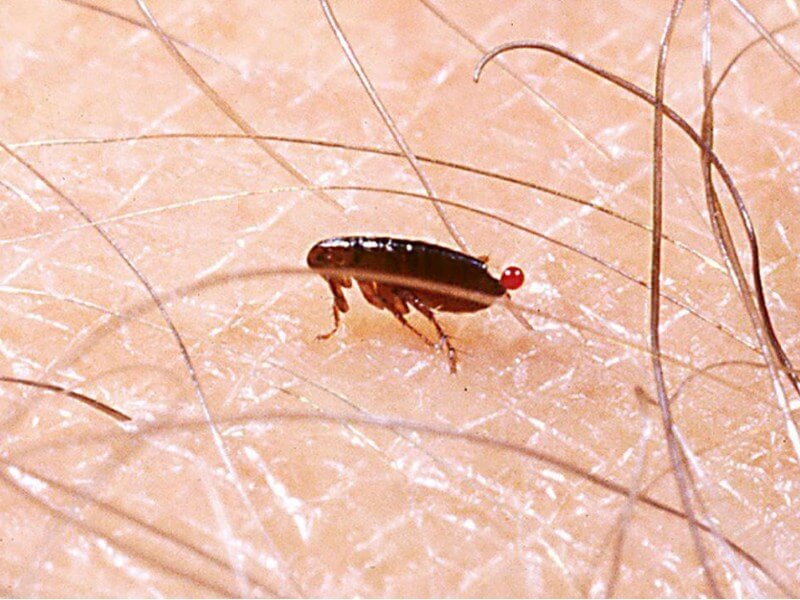Fleas can be small, but don’t take them lightly. Those tiny insects that sometimes bother our pets. But how long can fleas stick around in a house even when no pets exist? Fleas are small, reddish-brown bugs that like to live on warm-blooded creatures like cats and dogs.
We’ll learn about the life of a flea, from when it’s just an egg to when it grows up. And have you ever wondered how they managed to find a new host? It’s pretty fascinating.
So, to know about these tiny creatures and to keep them away from your house, you should know about them.
So, let’s get to know for how much time fleas can live without a host.
1. Fleas with Or without Pets
Fleas are those tiny, reddish-brown insects that are often associated with dogs. They are commonly found in the middle of the fur of dogs and cats, feeding on their warm blood.
But what happens when there are no pets around? Can fleas survive on their own? The answer might surprise you.
Fleas, like many parasites, have evolved to be highly adaptable. At the same time, they prefer warm-blooded animals.
2. Flea Life Stages Explained
Understanding the life cycle of fleas is important in identifying their ability to survive without pets. Fleas have four stages: egg, larva, pupa, and adult.
The eggs are laid on the host animal, which can be your pet if you have one. These tiny eggs are hardly visible to the naked eye and can number in the hundreds.
The eggs hatch into larvae after a short period, usually around ten days. Following the larval stage, fleas enter the pupal stage.
3. Flea Families Multiply Quickly
Fleas are not only survivors; they are fast reproducers. A single mature female flea can lay up to 50 eggs per day. Think about it: that’s potentially hundreds of new fleas in just a matter of days.
What’s even more surprising is that nearly half of these eggs can develop into female fleas, continuing the reproduction cycle.
This rapid multiplication can seem like a little problem, but it is not.
4. Where Fleas Hide in Your Home
Understanding where fleas hide in your home is crucial for effective pest control. Integrating natural flea repellents for home, such as certain plants and herbal extracts, can enhance your efforts in keeping these pests at bay.
While they might not have a pet to call home, fleas are experts in looking out for alternative hiding spots.
Inside your home, they tend to favor soft areas like carpets, rugs, and furniture. These materials provide a comfortable environment for them to reproduce and feed.
It’s important to note that fleas can also be found outdoors in grass, shrubs, and other sheltered locations.
5. How Fleas Find Their Targets
Fleas are not just passive creatures waiting for a host to stumble upon them. They have a unique ability to sense potential hosts through various options.
They can detect movement, body heat, and even the carbon dioxide we exhale when we breathe.
While fleas prefer furry hosts like dogs and cats, when pets are absent, they won’t hesitate to feed on humans.
6. Fleas Are Surprisingly Jumpy
Considering their small size, fleas are surprisingly light and can jump impressive distances. These tiny insects can jump up to eight inches horizontally and seven inches vertically.
Their jumping ability allows them to quickly move from place to place and find a new host. This unique quality is proof of their adaptability and survival skills.
7. Fleas Can Last Two Weeks Alone
After detaching from a host, fleas can survive for approximately two weeks on their own. During this period, female fleas cannot lay eggs, but they are still looking for a new host to begin the reproductive cycle.
This means that even when pets are temporarily absent, fleas can remain a problem if not properly addressed.
8. Stop Fleas with Prevention and Treatment
Preventing and treating fleas is important for maintaining a pest-free home. Preventative measures are especially important if you have pets or live in an area prone to fleas.
One effective way to safeguard your home is by using products like AdamsTM Flea & Tick Home Spray on fabrics and furniture.
This spray helps create a protective barrier, making it less inviting for fleas to reside in your living spaces.
9. Using AdamsTM Products for Fleas
AdamsTM offers a range of specialized products designed to combat flea places effectively. The Flea &
Tick Home Spray is specifically formulated for treating indoor spaces. Its easy-to-use design allows you to target common flea-hiding spots, ensuring a proper application.
Also, the Yard & Garden Spray is ideal for outdoor areas where fleas might be.
10. Keeping Pets Safe from Fleas
Pets are like family. We care a lot about them. Ensuring that your pets are free from fleas is necessary for their health and happiness.
Regular grooming practices, such as brushing and bathing, can help you detect and remove fleas early.
Using effective flea prevention products, such as topical treatments or flea collars, can provide ongoing protection for your furry friends.
Conclusion
We saw that fleas can stick around in a house even when no pets are to bother. These little insects are pretty tough and can survive for about two weeks without a host. They can hide in comfortable spots like carpets and furniture, waiting for a chance to hop onto another host.
Understanding the different stages of a flea’s life is important. They start as tiny eggs, then become larvae that eat stuff in the house. After that, they make a cocoon and later become adult fleas.
With some simple steps and products, you can keep your home flea-free and comfy for everyone.


